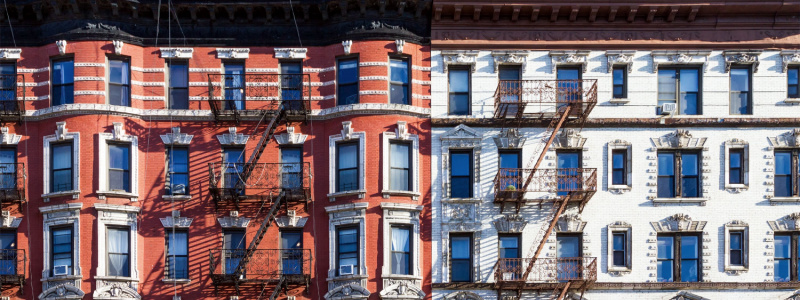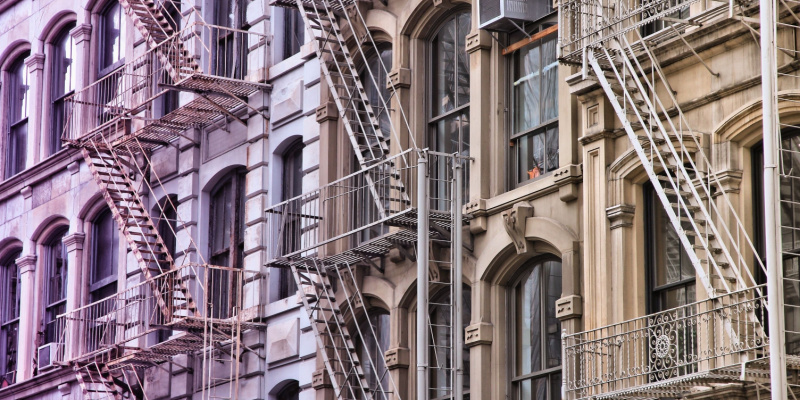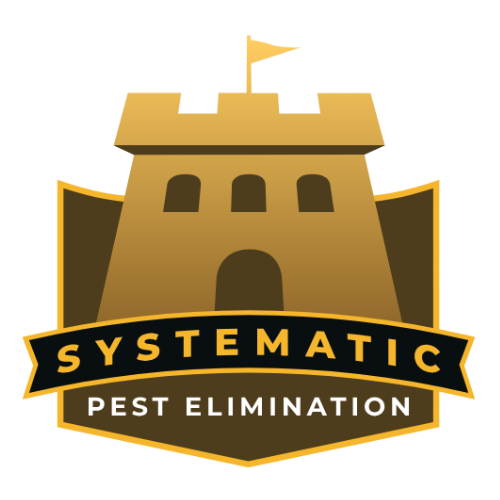Apartment Building Pest Problems in the NYC Area

Picture this: you come home after a long day of work, ready to unwind in the comfort of your apartment. But as soon as you step through the front door, you’re greeted by an unwelcome surprise – a trail of ants marching across your kitchen counter. Sound familiar? If you live in the NYC area, chances are you’ve encountered your fair share of pest problems in apartment buildings. From roaches scurrying through hallways to bed bugs invading bedrooms, these tiny intruders can turn any dreamy abode into a nightmare. In this article, we’ll explore the common pests plaguing apartment buildings in the NYC area and offer some tips on effective solutions for property managers, landlords, and tenants. The NYC Area and Its Pest Challenges The bustling urban environment of the NYC area provides an ideal habitat for pests. Several factors, such as the high population and climate, contribute to the prevalence of pest problems in apartment buildings. 1. High Population Density NYC’s population density is among the highest in the world, with residents living in close proximity to one another. This proximity can facilitate the rapid spread of pests between units and buildings. 2. Shared Spaces Common areas in apartment buildings, such as lobbies, hallways, trash rooms, and basements, offer pests like rodents and cockroaches numerous hiding places and access points. 3. Favorable Climate NYC’s climate-controlled apartment buildings provide pests with stable temperatures year-round, making them attractive places to seek shelter. 4. Abundant Food Sources Pests are drawn to readily available food sources, and apartment buildings offer plenty of opportunities for foraging, especially in kitchens and common spaces. Common Pests in NYC Apartment Buildings Several pests are particularly prevalent in NYC apartment buildings. Cockroaches, especially the German cockroach, are a persistent problem in the NYC area. They are known for their adaptability and ability to hide in small crevices. Rodents are attracted to food and shelter, making apartment buildings an ideal habitat. They can carry diseases and cause structural damage. Bedbug infestations can spread quickly in apartment buildings through shared spaces and infested furniture. Various ant species, including the odorous house ant and pavement ant, can be common nuisances in apartments. Challenges Faced by Property Managers and Landlords Property managers and landlords in the NYC area encounter several challenges when dealing with pest problems in apartment buildings. 1. Legal Responsibilities Landlords are legally obligated to maintain habitable living conditions, which includes addressing pest infestations upon tenant complaints. 2. Tenant Turnover Frequent tenant turnover can facilitate the spread of pests. New tenants may unknowingly bring pests with them, contributing to the persistence of infestations. 3. Shared Spaces Managing pest prevention in common areas can be challenging, as it requires coordination among tenants, property management, and pest elimination professionals. 4. Rapid Reproduction Pests like cockroaches and rodents reproduce rapidly, making it crucial to address infestations promptly. Effective Solutions for Pest Problems Addressing pest problems in NYC apartment buildings requires a proactive and coordinated approach between landlords, tenets, and pest elimination professionals. 1. Routine Inspections Property managers should conduct regular inspections of common areas and individual units to detect early signs of infestations. 2. Prompt Action If pests are detected, landlords must take immediate steps to address the issue. This often involves hiring licensed pest management professionals with expertise in the specific pest species. 3. Professional Pest Elimination Pest prevention professionals develop customized treatment plans based on the type and extent of the infestation. These plans may include bait stations, insecticides, and preventive measures. 4. Tenant Cooperation Tenants play a vital role in pest management efforts. They should promptly report signs of pests, cooperate with pest professionals during treatments, and follow recommended prevention measures. 5. Educational Programs Landlords and property managers can implement educational programs to raise awareness about pest prevention and eradication among tenants and building staff. 6. Preventative Measures To prevent future infestations, seal entry points and gaps in walls, floors, and doors. Regular maintenance, such as fixing leaks and ensuring proper insulation, can also deter pests. Legislation and Pest Management The NYC area has regulations in place to address pest elimination in apartment buildings. These regulations ensure that landlords meet their legal responsibilities to provide habitable living conditions. In the dynamic urban landscape of the NYC area, a collective commitment to creating pest-free living environments in apartment buildings is necessary to ensure the health and comfort of all residents. From rodents to bed bugs, these pests can cause significant damage and health risks for residents. However, there is a solution. By contacting Systematic Pest Elimination, you can ensure that your apartment building is free from pests and create a safe and comfortable living environment for all tenants. Take action today and say goodbye to unwanted guests in your apartment building.
NYC Landlord’s Guide to Pest Management

As a landlord in the bustling metropolis of New York City, maintaining a pest-free environment for your tenants is crucial for their comfort, health, and satisfaction. The urban density and diverse landscape of NYC create unique challenges when it comes to pest management. This comprehensive guide will examine strategies and preventive measures NYC landlords can implement to ensure their residential properties remain pest-free. Understanding the Pest Landscape in NYC Like any urban environment, New York City has its share of common pests. Some of the most prevalent pests in NYC include: Due to the dense population and abundant food sources, rats and mice are common pests in NYC. They can infest homes, businesses, and public spaces, posing health risks and property damage. Cockroaches thrive in urban environments and can be found in homes, restaurants, and commercial buildings. They are known to carry diseases and trigger allergies. Bed bugs can infest homes, hotels, and other places where people reside. Their bites can cause itchy, red welts and emotional distress. Pigeons are abundant in NYC and can create sanitation issues with their droppings. They often congregate in public areas and can be a nuisance. Flies, including house flies and fruit flies, are attracted to waste and food sources, making them common in urban settings. These pests are often found in dark, damp areas and can damage books, paper, and clothing. These insects can cause structural damage to buildings by tunneling through wood. Urban Factors New York City’s dense urban landscape, bustling human activity, varied climate, and intricate transportation networks collectively create an environment ripe for pests. The extensive population, plus plenty of buildings and public spaces, provide pests with ample shelter, sustenance, and breeding grounds. These factors, along with the challenges posed by waste management, construction, and the global nature of the city, contribute to the notable presence of pests in NYC. Preventive Measures for Pest Management In New York City, landlords hold a crucial responsibility for ensuring the eradication of pests within their buildings. This obligation stems from the understanding that pest infestations can pose significant health hazards and discomfort to tenants. By upholding their role in pest elimination and prevention, landlords help maintain the quality of living conditions and safeguard the well-being of residents. Several methods to manage pests include: 1. Regular Inspections Conduct routine inspections of your property to identify signs of pest activity. Check for cracks, gaps, and other entry points that pests might exploit. 2. Sealing Entry Points Seal gaps around doors, windows, pipes, and vents to prevent pests from entering the building. Use weather stripping and caulking to block potential access points. 3. Proper Waste Management Encourage proper waste disposal by providing clearly labeled and well-maintained trash bins. Schedule regular trash collection to prevent the accumulation of food sources. 4. Landscaping and Exterior Maintenance Keep outdoor areas clean and well-maintained to reduce hiding places for pests. Trim vegetation away from the building and address any standing water issues. 5. Baiting and Trapping Use bait stations and traps strategically to target specific pests. Regular monitoring and maintenance of these devices are essential for their effectiveness. 6. Non-Chemical Methods Explore non-chemical alternatives, such as heat treatments for bedbugs or vacuuming for cockroach control. These methods can be highly effective and reduce the need for pesticides. 7. Education for Tenants Provide tenants with information about pest prevention and proper sanitation practices. Encourage them to report any signs of pest activity promptly. 8. Professional Pest Elimination Services Partner with licensed pest elimination professionals who are experienced in NYC’s unique pest challenges. Regular inspections and treatments can help manage infestations effectively. Maintaining a pest-free environment in NYC residential properties requires vigilance, education, and a proactive approach. By implementing regular inspections, preventive measures, and effective pest elimination strategies, landlords can create a comfortable and healthy living space for their tenants. Collaborating with professional pest elimination experts such as Systematic Pest Elimination and fostering tenant awareness are key components of successful pest management in the city that never sleeps. Remember, a well-maintained and pest-free property not only enhances tenant satisfaction but also safeguards the reputation and value of your investment.
Pest Elimination Guide for NYC Restaurant Inspections

New York City’s vibrant culinary scene is renowned worldwide, but with it comes the constant challenge of pest infestations in restaurants. The rigorous restaurant inspection process conducted by the NYC Health Department strongly emphasizes maintaining a pest-free environment. In this guide, we’ll delve into effective strategies for pest elimination that will help NYC restaurant owners pass inspections with flying colors, uphold health standards, and preserve their reputations. Understand Common Pests Familiarize yourself with the pests most likely to invade your restaurant, such as rodents, cockroaches, flies, and ants. Understand their behavior, breeding patterns, and potential hiding spots. This knowledge will enable you to implement targeted pest elimination measures. Conduct Regular Full Inspections Conduct routine inspections of your restaurant’s premises, both interior and exterior, to identify signs of pest activity. Pay close attention to food storage areas, trash disposal sites, and entry points. Early detection allows for prompt action, preventing infestations from worsening. Keep Your Restaurant Clean, Sanitized, and in Working Order Maintain impeccable levels of cleanliness throughout your restaurant. Regularly clean surfaces, sweep floors, and sanitize food preparation areas. Ensure that food scraps and crumbs are promptly cleaned to eliminate potential food sources for pests. Also, the maintenance of your restaurant is crucial. Fix any leaks, plumbing issues, or structural damage that could attract pests. Moist environments provide breeding grounds for certain pests, so maintaining a dry environment is essential. On top of keeping up the inside, pay attention to the outside of your building, where pests can sneak in. Trim bushes, trees, and shrubs near the restaurant’s exterior to minimize hiding spots for pests and maintain a clear perimeter to discourage critters from getting too close. Another step you can take is to install screens on windows and doors to prevent flies, mosquitoes, and other flying insects from entering the premises. Take Care of Your Waste and Food Properly Proper waste management is crucial. Keep trash bins tightly sealed and emptied regularly. Store trash away from the restaurant’s main entrance, as pests are attracted to odors and can find their way inside if the bins are too close. Also, store food in airtight containers and keep them elevated off the floor. This prevents pests from accessing your ingredients and discourages them from finding a comfortable nesting spot. Employee Training Educating restaurant staff about the significance of upholding a pest-free environment is paramount to maintaining the establishment’s reputation, customer satisfaction, and overall hygiene standards. Staff members can actively contribute to a cleaner and healthier dining experience by understanding their critical role in preventing pest infestations. Proper training empowers them to identify early signs of pest activity promptly, report potential issues, and adhere to stringent cleanliness protocols. Emphasizing the correlation between pest prevention and food safety underscores the commitment to serving high-quality meals while fostering a sense of pride in maintaining a pest-free establishment. This collective effort ensures the well-being of patrons and safeguards the restaurant’s reputation, reflecting a dedication to excellence and professionalism. Call in Professional Pest Elimination Experts Hiring a licensed pest elimination professional is a wise investment. These experts can conduct thorough inspections, identify pest hotspots, and create a customized pest management plan for your restaurant. Regular treatments and follow-ups can ensure that your establishment remains pest-free. Treatments that pest experts will utilize include Integrated Pest Management (IPM). IPM combines preventive measures, monitoring, and targeted treatments, emphasizes environmentally friendly solutions, and minimizes the use of pesticides, promoting long-term pest elimination. This approach focuses on preventive measures like proper sanitation, effective waste management, and structural maintenance to deter pests. By emphasizing harmony with nature and the long-term well-being of the establishment, eco-friendly pest elimination ensures a pest-free environment and contributes to a healthier ecosystem and a more sustainable dining experience. For NYC restaurant owners, passing health department inspections and maintaining a pest-free environment is not just a regulatory requirement but a fundamental aspect of providing a safe and enjoyable dining experience. By implementing the strategies outlined in this guide – from regular inspections and meticulous sanitation to professional pest elimination services such as Systematic Pest Elimination – you can create a restaurant that is a culinary delight and a haven free from unwanted pests.
Property Management Pest Elimination NYC

Property management in New York City comes with its own challenges, and one of the most persistent among them is pest infestations. The city’s dense urban environment provides ample opportunities for pests like rodents, cockroaches, and bedbugs to thrive. Let’s examine a comprehensive approach to pest elimination for NYC property management, focusing on prevention, early intervention, and collaboration with professional pest elimination services. Prioritize Prevention with Inspections and Monitoring New York City is one of the top three cities in the US for pest infestations, so routine inspections are crucial for early detection. Partner with pest experts to conduct regular checks of the property. Early intervention prevents small issues from turning into full-blown infestations. Regularly inspect the property’s exterior for cracks, gaps, and other potential entry points, and seal these openings with appropriate materials like caulk, steel wool, or mesh to deny pests access to the building. Educate Tenants Tenant cooperation is essential in maintaining a pest-free environment. Educate tenants about the importance of proper waste disposal, cleanliness, and reporting pest sightings promptly. Clear communication can help prevent infestations from escalating. Regular Maintenance & Waste Management A well-maintained property is less likely to attract pests. Regularly inspect common areas, stairwells, basements, and shared spaces for signs of pest activity. Promptly address any leaks, plumbing issues, or structural damage that could create conducive environments for pests. Pests are drawn to accessible food sources. Ensure that trash bins are securely covered and emptied regularly. Encourage tenants to use sealed trash bags and avoid leaving trash outside their units. Implement Integrated Pest Management (IPM) The New York Department of Health claims that “pesticides should only be used as a last resort.” IPM is a holistic approach emphasizing prevention, monitoring, and targeted treatments. Collaborate with professional pest control services that specialize in IPM. They will conduct thorough inspections, create customized plans, and minimize the use of pesticides. Use of Effective Traps Traps can be employed strategically. Glue traps, snap traps, and electronic traps can capture pests, but baits should be cautiously used due to potential risks to humans and pets. Bedbug Prevention Bedbugs are a significant concern in NYC. Regularly inspect and vacuum mattresses, box springs, and upholstered furniture. Encourage tenants to report any signs of bedbugs immediately, as timely action can prevent their spread. Professional Pest Services Collaborate with licensed pest elimination professionals with experience managing properties in urban environments. They can assess the property’s specific needs, implement effective treatments, and provide guidance on long-term prevention. Emergency Response Plan Have an emergency response plan in place for severe pest infestations. This plan should include procedures for evacuation, communication with tenants, and coordination with pest control professionals. Stay Updated on Regulations NYC has regulations in place for pest control in rental properties. Stay informed about these regulations and ensure that your pest management practices are compliant. Effective pest elimination in NYC property management requires a proactive, multifaceted approach encompassing prevention, regular inspections, professional collaboration, and tenant education. By focusing on these key areas, property managers can create an environment that is unwelcoming to pests and offers tenants a clean, safe, and comfortable living space. By prioritizing prevention and maintaining a strong partnership with pest services like Systemic Pest Elimination, NYC property managers can successfully navigate the challenges of pest infestations and ensure the well-being of their tenants.
